Growing Spring Onions from Seed to Harvest
June 2nd, 2021 | Categories
Spring onions, or sibies, or scallions, as they are also known, are an amazing vegetable to grow yourself at home. Spring onions are immensely popular throughout the culinary and gardening worlds. They are fast-growing, easy to grow, and delicious. They tend to have a milder flavour than onions which makes them great for eating raw and adding to salads, as garnishes, in soups, stir-fries, the list really could go on. Like so many other vegetables they are loved by experienced and novice gardeners alike for their sheer ease of growing and versatility. Experienced gardeners will also grow them because they are an idea “filler crop” that can be grown between slower growing vegetables.
They’re a great one for beginners to try if it’s a first foray into growing in the garden at home because they grow so fast, so it means you can afford one or two false-starts. Don’t let that put you off though, follow our guide and you’ll get it right first time. This guide is for spring onions grown in the ground at home from seed. We’ll cover everything right from the very beginning sowing the seeds, transplanting, and how to care for them, before finally harvesting and enjoying. Ready? Let’s get into it.
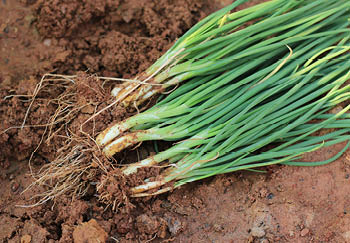
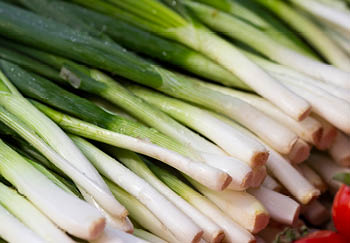
Why Grow Spring Onions at Home?
As mentioned, spring onions are unbelievably versatile vegetables and growing your own means you will have a plentiful supply nearby when you need them for your dishes. Spring onions also form part of a balanced and healthy diet providing us a range of health benefits, vitamins, and minerals like vitamin C, K, B6, folic acid, as well as a good source of fibre. They are an immune system booster too, they help to regulate blood sugar levels, and links have been found in studies that show they can help regulate the body’s cholesterol levels. There are studies which say they may even help reduce the overall risk of cancer!
They are also super-easy to grow meaning you don’t need to worry about any nuances in the growing process. They over-winter well, plus, fresher is always better and tastier, hands down. The supermarket varieties are all grown with longevity in mind at the expense of freshness, flavour and nutrients.
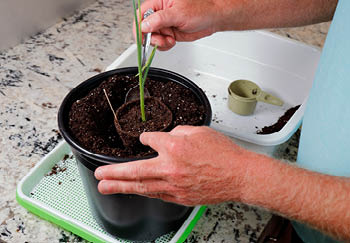
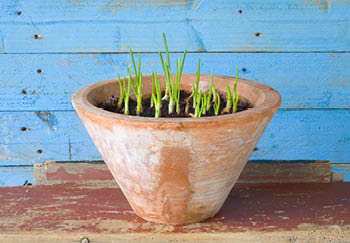
What Variety of Spring Onions Should You Grow?
Compared to other vegetables, there aren’t that many different varieties of spring onion you can grow. Despite its popularity it is quite overlooked across the gardening world, which is a little shame as it’s such a good vegetable. There are a few different varieties to choose from though, and you certainly won’t see them in the supermarkets.
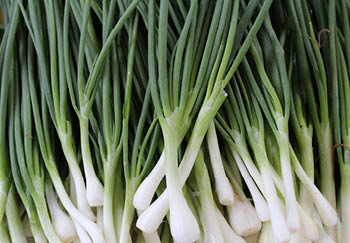
Varieties to try
White Lisbon
Possibly the most popular and best-known variety grown. It has a short cropping time and is also great for overwintering. This means they can be planted in late autumn and will live over the winter months until spring when they will start growing. It is so good for this it has won the coveted RHS Award of Garden Merit for over winter growing. If you’re a beginner this is the one to try.
Japanese Bunching or Ishikura
This variety doesn’t produce bulbs instead it produces a clump of slender long stems of spring onions. It can be harvested when thin or left to grow as thick as carrots!
Apache
A deep purple-red skinned variety that offers nice, mild flavour and a crisp texture.
Feast F1 Hybrid
An outstanding all-rounder ideal for successive sowings to be harvested all summer long.
North Holland Blood Red
This variety produces a fine red skinned spring onion. Similar to the Apache.
White Star
This variety produces golf ball sized blubs with a lovely flavour and crisp texture.
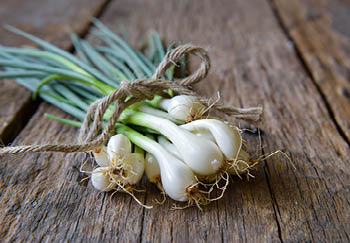
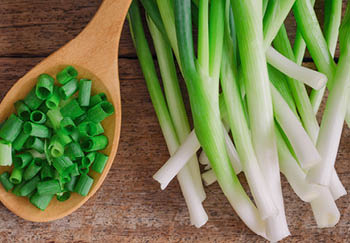
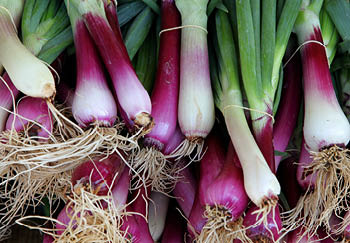
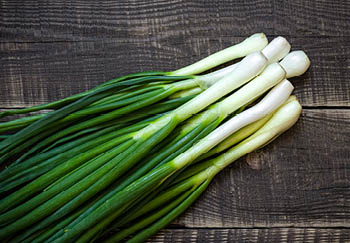

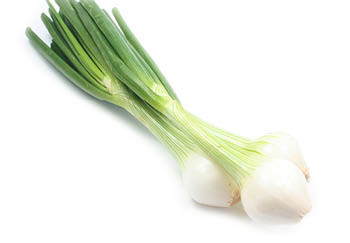
You Can Grow From Supermarket Spring Onions, But Don’t
Unlike some other store-bought vegetables which wouldn’t be suitable to use to start your crop, such as potatoes, spring onions can be used in this way. However, we wouldn’t advise it. Firstly, it is so boring. Do you want to grow more of the same commercially mass-produced spring onions? No way! You are here because you want to do it yourself and do it better! Secondly, these types of onions are grown for their longevity at the expense of other qualities like flavour, nutrients, and size. Elect instead for organically grown seeds from a good garden centre, use natural, good quality composts and fertilisers, and these, combined with the fact you will be able to pick and eat when fresh will make for a night and day experience.

General Growing/Harvesting Timescale for Spring Onions
When it comes to sowing and planting spring onions in the UK it will either be spring or summer. They are usually ready within eight weeks, though some may take a week or two longer, depending on the variety, growing conditions, or how large you want them to be. Their fast-growing time means you can plant, harvest, and plant more over the growing season if you choose. Spring onion seeds can also be sown in late autumn for overwintering. Some varieties are better than others for this, but most are generally frost resistant. They will remain dormant until the conditions are right in spring when they will start growing and give you an early crop. If you’re a beginner and are wondering if you should overwinter, you can try it, but you’ll still get great results just doing it in the spring when the weather is better. To overwinter, simply start this process off in September instead of March/April.
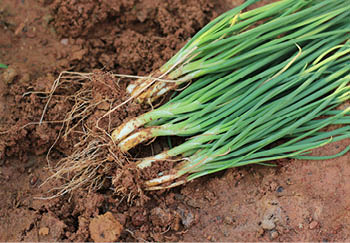
How to Start Growing Spring Onions
Now you know some more about spring onions you’re ready to get started growing your own at home. It pays to know what to do in advance so read through our guide fully. Then when you’re ready to go and the conditions are right you can get started.
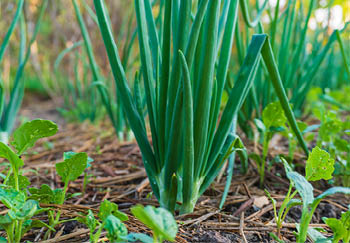
What You Will Need
The following tools will make your job much faster and easier. If you don’t have these consider investing in good ones that will last for years to come:
Spade
For digging your area, get a good one that lasts for years.
Fork
A fork differs from a spade as it will help to loosen clumps of soil and tough areas.
Hand Trowel
A hand trowel is so versatile for digging, smoothing, and applying compost or soil and other material used in your gardening. A total essential.
Spring Onion Seeds
Your chosen seeds of course!
Compost
To give your soil enrichment. A good quality multi-purpose vegetable compost will do the trick just fine.
Fertiliser
To give your crop that extra feed boost. Again, any good quality vegetable fertiliser will do and down the line you can experiment with different fertilisers, like well-rotted manure or fish blood and bone.
Horticultural Fleece
Not essential, but it will help. This is an exceptionally light fabric which allows light and water to pass though it but at the same time it traps in heat below and protects from high winds. Also offers protection from birds that might like some of your plants as nest material. Think about your local region’s climate, could this be beneficial?
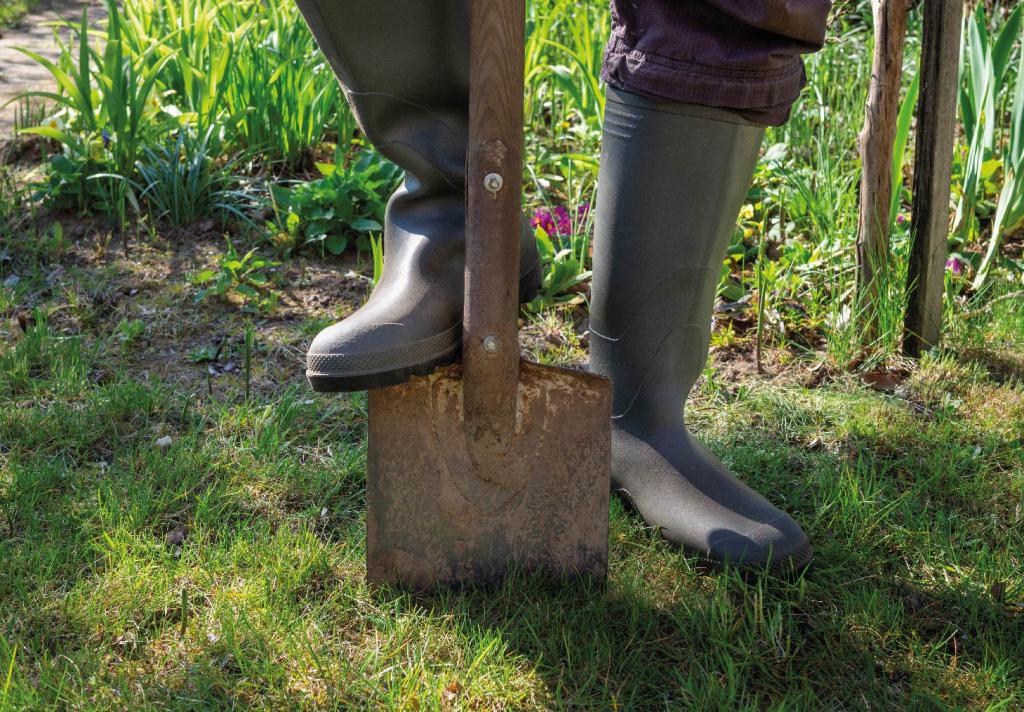
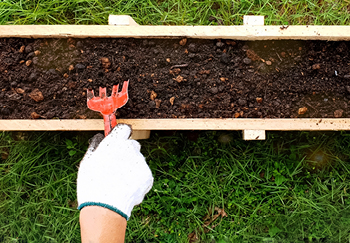
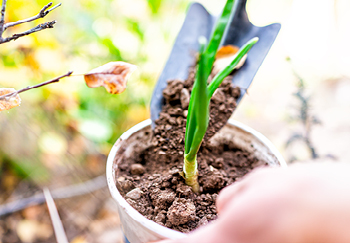
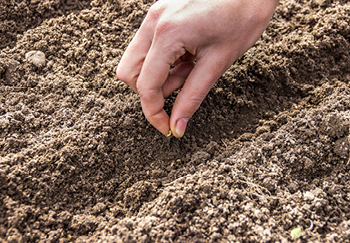
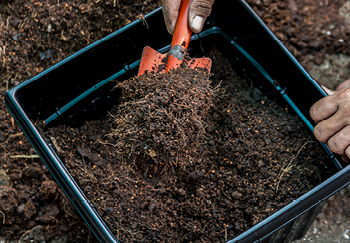
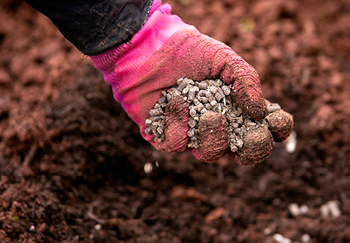
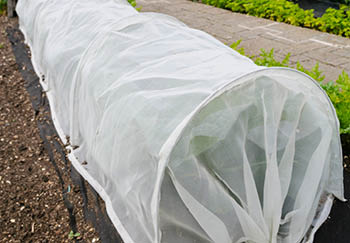
Preparing the Ground & Soil
Now that you have gathered the tools it’s time to sort the ground. Spring onions are easy to grow from seed and will grow in any fertile, well-drained soil, in full sun. If the soil is not well-draining they will rot. Prepare the soil by digging and forking, clearing any weeds and stones you come across. Then dig in some compost and fertiliser to enrich and give your seeds all the nutrients they need for a great start. They don’t need a deep soil, so you don’t have to dig down too deeply. However, if these are a filler crop, then naturally dig as deep as the main crop needs.
To give you an idea of how large your area will have to be, you sow your seeds in what are called drills (basically as shallow line created by a trowel or something with a point, even a stick). These drills are going to be in rows roughly 1cm to 2cm deep and about 10cm to 15cm apart from one another. You might only need up to a few drills depending on the size of your space and how many you plan to grow.


Sowing Spring Onion Seeds
Next, once your drills have been done, sow the seeds thinly by sprinkling them into the drills with visible space between each seed, about 3cm to 5cm. Cover with a light layer of soil/compost. Once done, give them a light watering.

Growing
As they are growing towards the eight-week mark, continue to water lightly, water a bit more in dry periods, and watch for any weeds that sprout. Spring onions don’t do well with competition so as soon as you see any weeds pull them by hand, so they don’t leech nutrients from your crop. Doing this by hand also helps avoid damage to the shallow roots of the spring onions that using a tool might do.
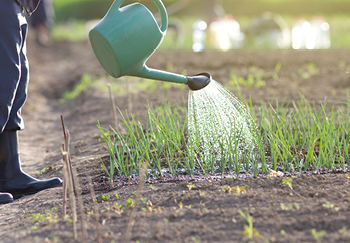
Harvesting Your Spring Onions
Your spring onions will be ready to harvest around the eight-week mark after initially sowing. They’ll also be roughly 15cm/6inches tall, and the bulbs will be small too, roughly one to two centimetres wide. Of course, different varieties will come with their own nuances, some may crop faster, may be slightly thicker, so just be aware of these individual characteristics and all should be fine. A note on storage: Spring onions don’t keep as well as normal onions, so use immediately for the best results. Alternatively, you can pop them in a bag in the fridge and they should keep for one to two weeks at most. For a continual harvest of spring onions in summer, sow at three-week intervals from March to August, maybe even September if the conditions are right.

Common Problems
There are few problems with spring onions as they grow fast and suffer few diseases, but they can suffer from the same problems as the rest of the onion family. The most common problems you could face are:
Onion White Rot
This is visible in the form of a dense white fungal growth around the roots and base of the bulb. Unfortunately, there is no cure or remedy, and the only real option is to dig up all traces then destroy them by burning. This site should not be planted on again.
Onion Downy Mildew
This a fungal disease that can affect the leaves of spring onions, causing blotches on the leaf surface. In severe cases, leaves will shrivel and fall off, and plant growth is stunted. It is more common in wet weather. You can combat this by ensuring good spacing when planting, remove affected leaves if any, and try to water in the morning rather than at night when the water can sit.
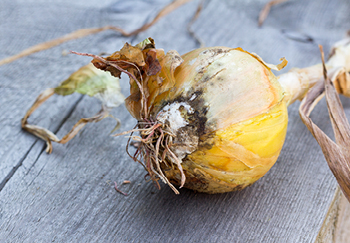
It’s good to be aware of these issues but as they mature so quickly it’s very unlikely you will encounter them.
Home Grown Spring Onions to Enjoy
That’s all it takes to grow your own deliciously fresh spring onions at home in the garden. Try them raw and cooked, add them to things like cheese sandwiches for that extra bit of flavour, salads, stir fries and so much more. They are easy and fast to grow so you should have a plentiful supply over the growing season to enjoy.

Useful Links
- Shop Online for Spring Onion Seeds
- Growing Onions from Seed to Harvest (Article)
- Growing Peppers from Seed to Harvest (Article)
- Growing Potatoes from Planting to Harvest (Article)
- Growing Chillies from Seed to Harvest (Article)
- Guide to Growing Tomatoes in Pots (Article)
- Grow Your Own Herbs (Article)
- Grow Your Own Strawberries (Article)






